Here is the second study from our Lent Bible study series. It finished with egg or rock painting and praying the Cairn prayer around each other. Incase you have missed it you might enjoy this reflection for yourself. You can read an introduction to Lent at the bottom of this page. https://www.ehillschurch.com/sundays-february-april-2/
Image from: http://www.repeatcrafterme.com/2014/04/pastel-paisley-painted-rocks.html
Introduction:
Throughout history, eggs have been associated with Easter celebrations. The egg as a symbol of new life and new beginnings goes back to primitive times and is found in all cultures and civilisations. Polynesian, Chinese, Japanese, Indians, Phoenicians, Greeks, Romans, and Europeans of the Middle Ages, all considered the egg in the nature of the primordial beginning of life.
At the Jewish Passover Seder, a hard-boiled egg dipped in salt water symbolizes both new life and the Passover sacrifice offered at the Temple in Jerusalem.
In Christian times, the egg was a symbol of new life just as a chick might hatch from the egg. The Easter egg tradition may have celebrated the end of the privations of Lent – in the West, eggs were forbidden during Lent as well as other traditional fast days.
The tradition of giving eggs as Easter greetings continues today and there are many fun traditions involved with breaking the eggs, hunting for them, singing for them and eating them.
The tradition of colouring eggs in bright colours – representing the sunlight of spring – goes back to the Middle Ages and is still an important custom for many Christians. In Germany it’s traditional to paint eggs green and eat them on Maundy Thursday while in Greek and Slavic cultures eggs are dyed red as a symbol of the blood of Christ.
The red colour of the Orthodox Easter egg signifies the blood of Christ, its shell His three-day entombment, and its breaking His Resurrection. The tradition of cracking of the red eggs among Orthodox symbolises a mutual wish for breaking one’s bonds of sin and misery and for entering the new life of Christ’s Resurrection.
Reflection:
Read aloud John 12:20-33. https://www.biblegateway.com/passage/?search=john+12%3A20-33&version=NLT
Invite the Spirit to speak to you as you soak in this scripture on new life. Share any words, pictures or sensations that come to you.
Lenten Challenge:
Enjoy making eggs for your home. May this eggs remind you of the new life Jesus died to give us -The life you have through Jesus’ Spirit within you.Below are some traditional symbols used to decorate eggs. You may be inspired by these.
Traditional symbols:
* Wheat: the bread of Life
* Fish: symbol of Christ
* Birds: an ancient image of the soul
* Triangles: the Trinity
* Spots: the tears of Mary
* Red: the blood of Christ
* Stars, roses, and poppies: love, charity, and good will
* Cross-hatching: both the crown of thorns and the tools that Christ used during his hidden years
A circling prayer for this Spring season in your life:
Times of drawing close to God can often be met with attack or resistance.
When the ancient Celtic Christians of Britain felt threatened physically or spiritually they used the Caim, or ‘encircling’ prayer for themselves or others. It is a simple ritual that enacts a spiritual reality.
The person needing prayer would stand inside a circle of rocks, or a circle made with a stick in the dirt or a circle of friends and then there would be prayer for God to surround them with his care.
A simple alternative when praying for yourself is to draw an imaginary circle around yourself in the air as you extend one or both arms and revolve clockwise pointing your index finger.
Whichever variation you choose, the next step is to verbalise the caim prayer.
Circle me, O God,
Keep hope within,
Keep despair without.
Keep peace within,
Keep worry without.
Keep joy within,
Keep fear without.
Keep love within,
Keep hatred without.
Keep strength within
Keep weakness without.
Keep light within,
Keep darkness without.
